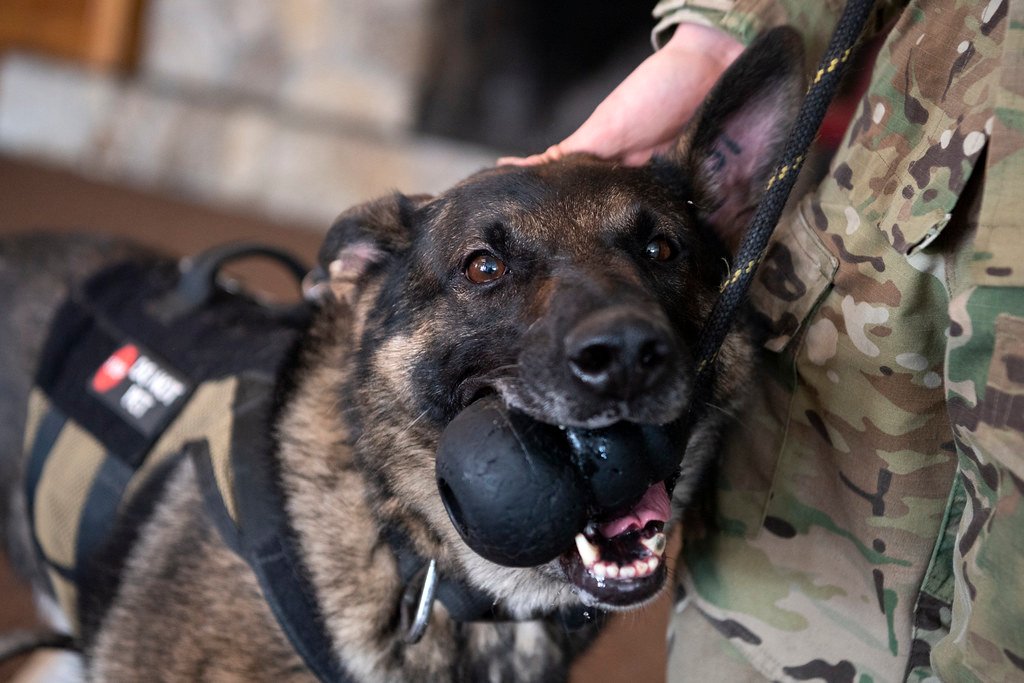Picture this: a fluffy bundle of joy, with pleading eyes and a paw raised in a delicate dance. It’s the ”beg” command, a heartwarming display of canine cuteness that has melted hearts for centuries. But behind this adorable act lies a deeper purpose – a carefully crafted behavior that showcases a dog’s control, discipline, and bonding with their human companions. In this article, we delve into the realm of this seemingly simple yet significant command, shedding light on its origins, training techniques, and the benefits it brings to both dogs and their devoted humans. So grab a treat and get ready to explore the fascinating world of the “beg” command, where cuteness and control intertwine to create a harmonious relationship between dogs and their human partners.
Table of Contents
- The Playful Art of Begging: Understanding the “Beg” Command
- Unlocking the Secrets: How to Train Your Dog to Beg on Command
- Making Begging a Safe Game: Establishing Boundaries and Limits
- Beyond the Cute Factor: Practical Uses for the “Beg” Command
- Mastering the Perfect Balance: Combining Warmth and Discipline in Begging
- Q&A
- Final Thoughts

The Playful Art of Begging: Understanding the “Beg” Command
Being able to command your dog to beg is not only fun, but it also strengthens the bond between you and your furry friend. The “beg” command is a playful trick that showcases your dog’s ability to engage in cute and endearing behavior. It is important to remember that teaching this command requires patience, consistency, and positive reinforcement.
Tips for teaching the “beg” command:
- Start by having your dog sit in front of you.
- Hold a treat close to their nose, then slowly raise it upwards towards their face.
- As the treat moves upward, your dog will naturally lift their front paws off the ground to reach for it.
- Once your dog is in the desired beg position, reward them with the treat, praise, and gentle petting. Repeat this process several times.
- Gradually reduce the frequency of treats and provide verbal praise or a belly rub as a reward instead.
With practice, your dog will learn to associate the verbal cue “beg” with the action of lifting their paws off the ground. Remember to keep training sessions short and enjoyable, ending on a positive note. Safely enjoy the playful art of begging with your four-legged companion!

Unlocking the Secrets: How to Train Your Dog to Beg on Command
Having a dog that can perform adorable tricks is always a crowd-pleaser. One of the most endearing tricks you can teach your furry friend is how to beg on command. With the right training techniques and a little patience, you can unlock this secret and have your dog captivating everyone with their irresistible begging pose.
Step 1: Establish Trust
Before diving into the training process, it’s important to establish a strong bond of trust with your dog. Spend quality time together, engage in fun activities, and provide positive reinforcement whenever they exhibit good behavior. This will create a solid foundation and make the training process much smoother.
Step 2: Teach the Basics
Start by teaching your dog some basic commands like “sit” and “stay.” This lays the groundwork for teaching them to beg. With consistent practice, your pup will become comfortable obeying these commands, making them ready for the next step.
Step 3: The Begging Position
To begin teaching your dog to beg, hold a treat close to their nose, then gradually move it up and back above their head. This motion will naturally cause them to lift their front legs off the ground and assume the begging position. As soon as they do, reward them with praise and the treat. Repeat this process several times, gradually reducing how high the treat is held until your dog can beg on command without assistance.
Remember, training requires patience and consistency. Celebrate small victories along the way and always reinforce positive behavior with praise and rewards. With time and dedication, you’ll unlock the secret to training your dog to beg on command, leaving everyone in awe of your four-legged companion’s irresistible charm.

Making Begging a Safe Game: Establishing Boundaries and Limits
Begging is a form of social interaction that has been prevalent in societies for centuries. While some individuals choose to engage in this activity as a means of survival, it is important to establish boundaries and limits to ensure the safety and well-being of those involved. By implementing a few essential guidelines, we can foster an environment where begging becomes a safer game for all parties involved.
1. Educating the community:
To promote safer practices in begging, it is crucial to educate the community about the rights and responsibilities of both beggars and those they approach for assistance. Workshops and awareness campaigns can provide insights into the challenges faced by individuals resorting to begging and emphasize the importance of treating them with respect and empathy.
2. Encouraging regulated begging zones:
In several cities, the development of regulated begging zones has proved effective in maintaining safety. These designated areas can provide a supportive environment for beggars, ensuring their protection from harassment, while also allowing authorities to monitor the situation more effectively. Implementing such zones can help establish clear boundaries and ensure that begging is carried out in a controlled and secure manner.
3. Collaboration with social welfare organizations:
Establishing partnerships with social welfare organizations is vital in making begging a safer game. These organizations can offer support to vulnerable individuals and help them explore alternative means of support, such as employment or access to social services. By addressing the underlying causes of begging and offering sustainable solutions, we can gradually reduce the need for individuals to engage in this risky activity.
By creating an environment where begging is a safer game, we acknowledge the inherent dignity of those involved and work towards a society that provides support and opportunities for all.
Beyond the Cute Factor: Practical Uses for the ”Beg” Command
When it comes to dogs, the “beg” command is often associated with their adorable ability to stand on their hind legs and mimic a begging posture. However, this command goes beyond just being cute and can actually serve several practical purposes. Here are a few ways in which the “beg” command can be useful:
- Strengthens Core Muscles: Teaching your dog to maintain the beg position can help strengthen their core muscles, promoting better posture and balance.
- Impressive Trick for Entertainment: The ”beg” command can be a crowd-pleaser during gatherings or when friends come over. It showcases your dog’s intelligence and training, leaving a lasting impression on anyone who witnesses it.
- Helps with Grooming: Having your dog know the “beg” command can come in handy during grooming sessions. By teaching them to beg, you can easily access and clean hard-to-reach areas or trim their nails without struggle.
- Prevents Jumping: Dogs who have a tendency to jump up on people can be taught to “beg” instead. This redirecting behavior not only prevents jumping but also provides an alternative outlet for their excitement.
So, the next time you teach your furry friend the “beg” command, remember that it’s not just about the cuteness factor. It’s a versatile command that offers practical benefits and strengthens the bond between you and your canine companion.
Mastering the Perfect Balance: Combining Warmth and Discipline in Begging
We all know that begging is an art that requires finesse and skill. And at the heart of any successful begging endeavor lies the mastery of finding the perfect balance between warmth and discipline. It’s a delicate dance that involves connecting with people on an emotional level while maintaining a sense of accountability and respect.
So how can we achieve this delicate balance? Here are a few tips to guide you on your journey to becoming a master of the art of begging:
- Show empathy: One of the key elements in creating warmth is displaying genuine empathy. When approaching potential benefactors, put yourself in their shoes and understand their perspective. This will help you connect with them on a deeper level and make them more likely to respond positively to your plea. Remember, empathy is a powerful tool that can melt even the toughest of hearts.
- Be respectful and grateful: While warmth is important, it should never come at the expense of discipline. It’s crucial to maintain a sense of respect and gratitude towards those who are kind enough to help. Express your appreciation and acknowledge their contribution. This will not only show your integrity but also encourage others to offer their support.
- Set clear goals: Discipline is essential in any begging endeavor. Clearly define your goals and communicate them effectively. Whether you’re seeking financial assistance or any other form of support, presenting a well-structured plan will not only show your commitment but also instill confidence in your potential benefactors.
Remember, finding the perfect balance between warmth and discipline in begging is an ongoing process that takes time and practice. By embracing empathy, respect, and clear goals, you’ll be well on your way to mastering this art and increasing your chances of success.
Q&A
What is the “Beg” command?
The “Beg” command is a training technique where dogs learn to balance on their hind legs and lift their front paws in a sitting position, often referred to as begging. It is a cute and controlled behavior that can be fun to teach and entertain others with.
How do I train my dog to “Beg”?
To train your dog to “Beg,” start by teaching them to sit on command. Then, hold a treat above their head, gradually raising it higher while giving the command. Reward them when they lift their front paws and maintain balance. Practice and positive reinforcement are key to training this behavior.
Is this command suitable for all dogs?
No, the “Beg” command may not be suitable for all dogs. It depends on their physical abilities and any existing health conditions. It is essential to consider your dog’s breed, age, and overall health before attempting to train this behavior. Consulting with a professional dog trainer or your veterinarian is recommended.
What are the benefits of teaching the “Beg” command?
Teaching your dog the “Beg” command can provide mental stimulation and strengthen your bond. It can also be an entertaining trick to impress friends and family. Additionally, it helps improve your dog’s coordination and balance.
Can teaching the “Beg” command be harmful to my dog?
When done correctly and with the appropriate physical condition of your dog in mind, teaching the “Beg” command should not be harmful. However, overdoing this behavior or training it improperly can strain your dog’s muscles or joints. Always monitor your dog’s body language and consult a professional if you notice any signs of discomfort or distress.
Are there any alternatives to the “Beg” command?
If the “Beg” command doesn’t seem suitable for your dog, there are plenty of other tricks and commands you can teach them. Some alternatives could include training your dog to shake paws, roll over, or play dead. Choose commands that are comfortable and safe for your furry friend.
Final Thoughts
In conclusion, the “beg” command is an enchanting blend of adorableness and disciplined behavior, turning your furry friend into the epitome of charm and self-control. Like a skilled magician, your dog learns to balance on their hind legs, captivating all who witness this captivating trick. But let us not be fooled by its cuteness; behind those soulful eyes lies a canine master of self-discipline, patiently awaiting your command.
Through patience and practice, you can transform your pup into a graceful performer, effortlessly showcasing their ability to maintain balance and composure. The “beg” command serves as a gentle reminder that even amid chaos, your four-legged companion possesses the capacity to remain poised and controlled.
Embarking on this training journey is not without its challenges, but the rewards are plentiful. Teaching your dog the “beg” command not only strengthens your bond but also cultivates their ability to focus and obey instructions. It is a testament to the incredible intelligence and versatility of our beloved companions.
Imagine the delight of your family and friends as your dog gracefully sits back on their hind legs, imploringly raising their paws for a treat or an affectionate pat. With every successful “beg,” you will witness the transformative power of discipline and the sheer joy of connection between you and your loyal companion.
May this captivating trick serve as a gentle reminder that, while cuteness may be the initial hook, discipline and control lie at the heart of this canine mastery. So, embrace the wonder and magic behind the “beg” command and watch as your beloved pup enchants everyone around them, one adorable pose at a time.
As an affiliate, my content may feature links to products I personally use and recommend. By taking action, like subscribing or making a purchase, you’ll be supporting my work and fueling my taco cravings at the same time. Win-win, right?
Want to read more? Check out our Affiliate Disclosure page.